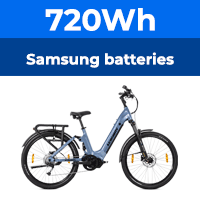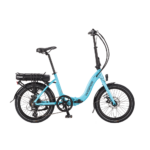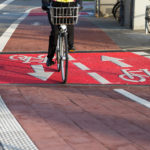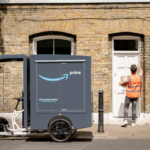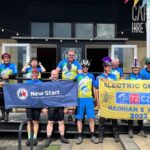Hi guys, I've introduced myself in the new members area with pictures and data of the new bike that I've built myself.
Here:
http://www.pedelecs.co.uk/forum/threads/ive-just-finished-building-my-first-trail-ebike-pics.18787/
When she hits around 20 mph (or slightly over) I feel that the motor has reached a terminal speed. It's like a wall and all acceleration is lost. Is this the designed built in maximum of the motor or is it the controller limiting the speed? It really doesn't feel like the motor runs out of juice. It feels restricted.
It's a 36v 500w motor, I'm sure if one was to put 48v into the motor it would spin faster, no?
(I don't necessarily have any interest in doing so I am just keen to learn and find out what is going on.)
My economy question is connected, it's about coasting and cruising. My thinking is that the full power output potential of the motor (500 watts) is obviously used for acceleration but I can't imagine that the full power output is used to maintain this "speed ceiling." (The same goes for legally speed restricted machines once they hit 15mph.) This effect would be even more pronounced going downhill with the accelerator turned to maximum. Some downhills I can even coast/ pedal to high 27-28mph at which point opening and closing the accelerator has no noticeable effect on the bike at all. Is the controler clever enough to stop/ slow power going to the motor in these situations or not?
The only way I can think of to observe this in action is to fit a shunt and a little ameter to show real time amps, I could then easily calculate the watts at any given time.
It's a bit elaborate though just to satisfy my curiosity and not actually serve any purpose.
Can anyone here shed any light on how all this works for me? (Or point me towards some reading material.)
Many thanks.
Here:
http://www.pedelecs.co.uk/forum/threads/ive-just-finished-building-my-first-trail-ebike-pics.18787/
When she hits around 20 mph (or slightly over) I feel that the motor has reached a terminal speed. It's like a wall and all acceleration is lost. Is this the designed built in maximum of the motor or is it the controller limiting the speed? It really doesn't feel like the motor runs out of juice. It feels restricted.
It's a 36v 500w motor, I'm sure if one was to put 48v into the motor it would spin faster, no?
(I don't necessarily have any interest in doing so I am just keen to learn and find out what is going on.)
My economy question is connected, it's about coasting and cruising. My thinking is that the full power output potential of the motor (500 watts) is obviously used for acceleration but I can't imagine that the full power output is used to maintain this "speed ceiling." (The same goes for legally speed restricted machines once they hit 15mph.) This effect would be even more pronounced going downhill with the accelerator turned to maximum. Some downhills I can even coast/ pedal to high 27-28mph at which point opening and closing the accelerator has no noticeable effect on the bike at all. Is the controler clever enough to stop/ slow power going to the motor in these situations or not?
The only way I can think of to observe this in action is to fit a shunt and a little ameter to show real time amps, I could then easily calculate the watts at any given time.
It's a bit elaborate though just to satisfy my curiosity and not actually serve any purpose.
Can anyone here shed any light on how all this works for me? (Or point me towards some reading material.)
Many thanks.


